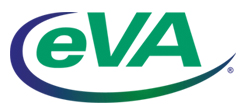First in a series of articles for the Fredericksburg Regional Chamber of Commerce
By Susan Carol and Barbara Fiori
Healthy dialog with employees promotes your business success. It even strengthens your business reputation and brand. What could be more important than that?
While this is a very basic concept, you’d be surprised how absent this is in many organizations, large and small. One reason is that companies do not realize the value of having their human resources (HR) and public relations (PR) resources collaborate. Their combined skill sets can work wonders in the workplace.
Positive work environments are more productive and employees who feel appreciated and heard will be ambassadors in your target markets. Employees are key constituents who should be considered as important as your customers, investors and partners.
Management must proactively plan to foster two-way communication, not wait for a crisis, such as a lawsuit, overpowering competition or rumors coursing through the Internet. Most misunderstandings or failures can be honestly identified, explained and resolved proactively.
Consider also that your employees must receive information in different ways in order to understand it. In most organizations today there are three generations of people working together, all with different values and expectations. They also have very different ways of absorbing news. An intranet self-help site may work well for your Generation X’rs, but your aging baby boomers still frequently need a pat on the back or at least an approving nod.
Too often policies are issued, press releases blasted and Web sites launched without grassroots participation from employees. Too often communication is top down. If PR and HR are collaborating in an organization, they can maximize their complementary skills and experience.
The unique strength of HR professionals is that they have their finger on the pulse of business internally. For example, they will know what matters most to employees and be able to identify human interest stories that PR can use to communicate company values and missions. They will be able to identify where the trust issues are and where words and actions are not matching up.
And while HR experts can articulate the issues, PR professionals can turn them into stories and messages that are easily understood by different employees. Too many management communications are self-serving or, even worse, a string of buzz phrases. Rather, they should be substantive, truthful and something employees appreciate reading and truly understand.
Your employees will have an opinion about everything and you should encourage their expression of it. They are then more likely to say what you want to hear: “This is a great place to work.”
Editor’s Note:
This is the first in a series of columns for Chamberlink on employee relations and communications strategies. Ms. Fiori is a human resources consultant and Ms. Carol is a public relations consultant, both serving the greater Fredericksburg area. Both have decades of experience with organizations representing a wide variety of industries and markets locally, nationally and internationally.





